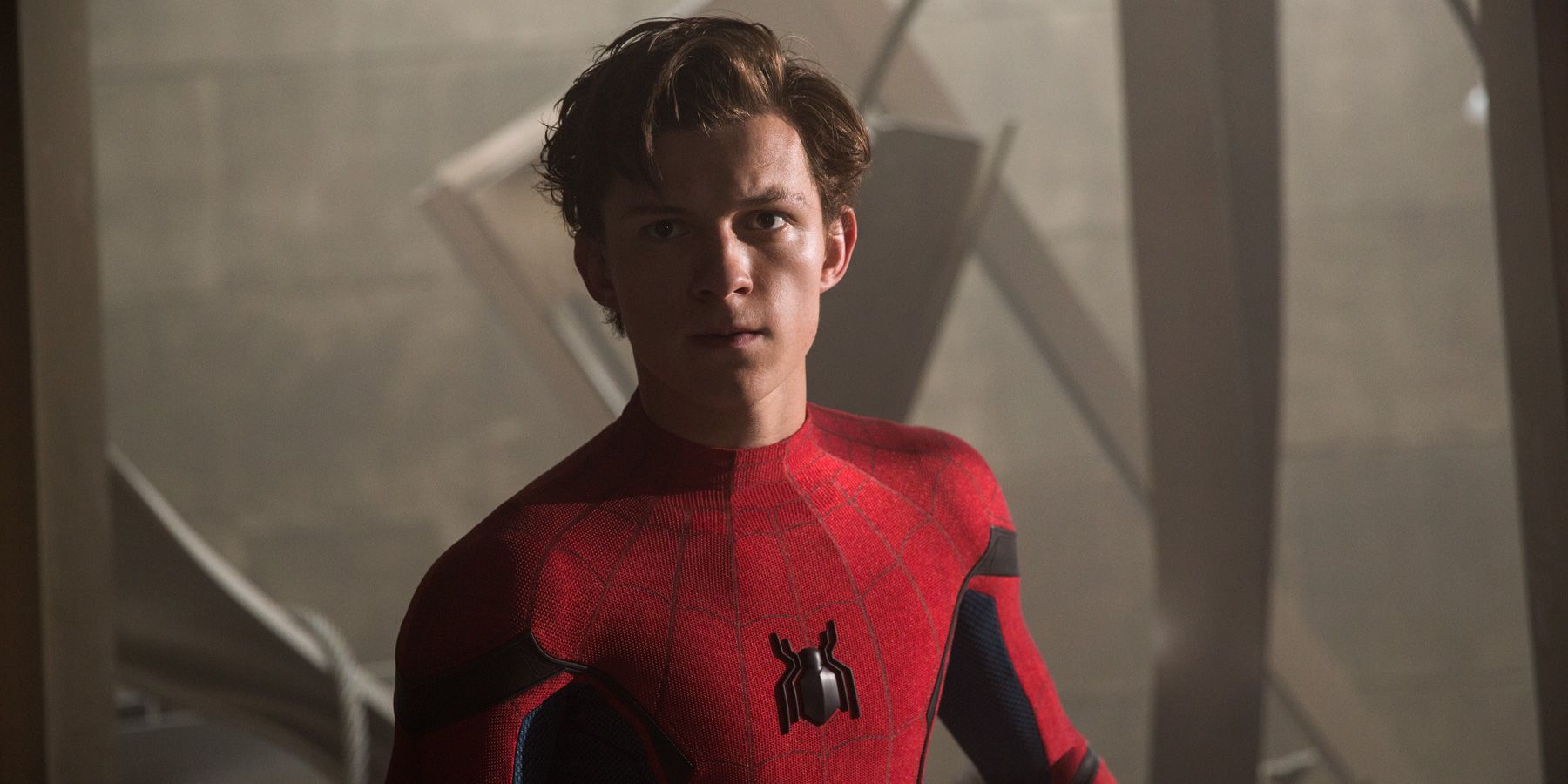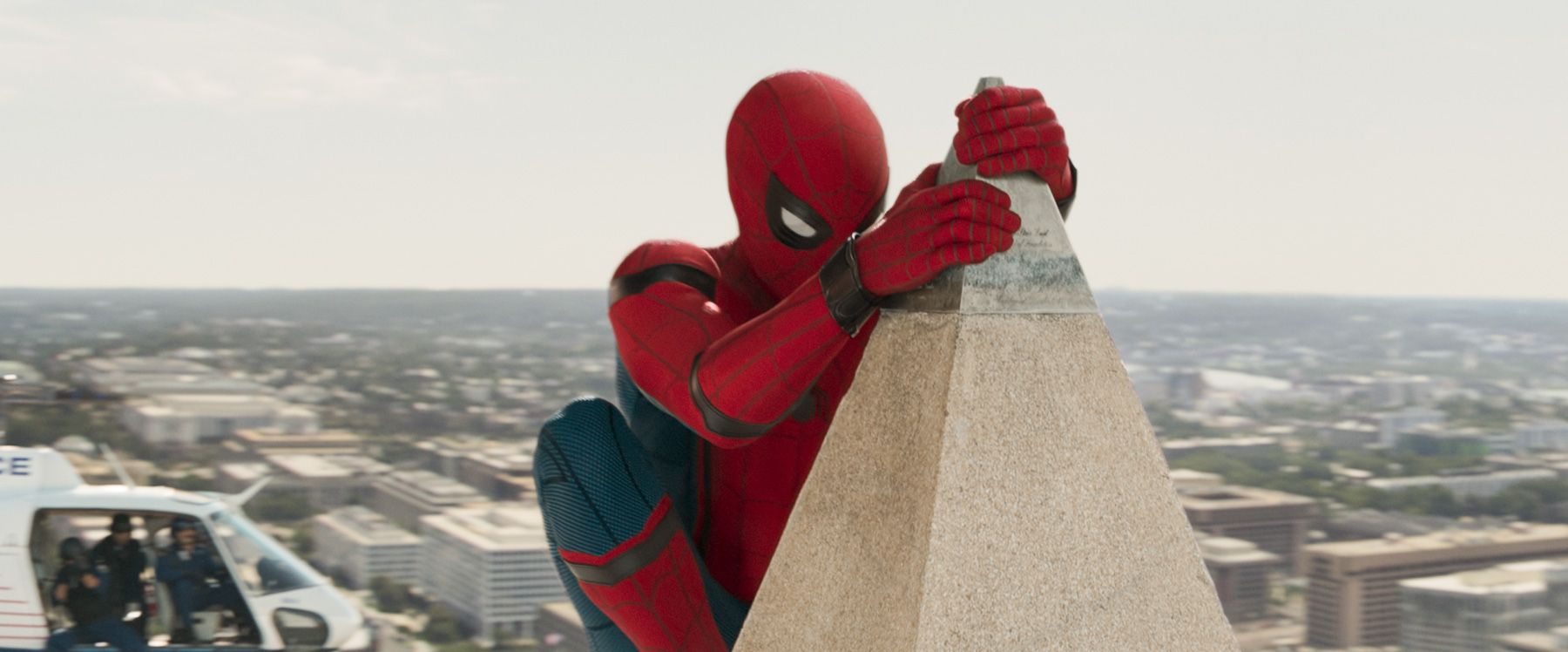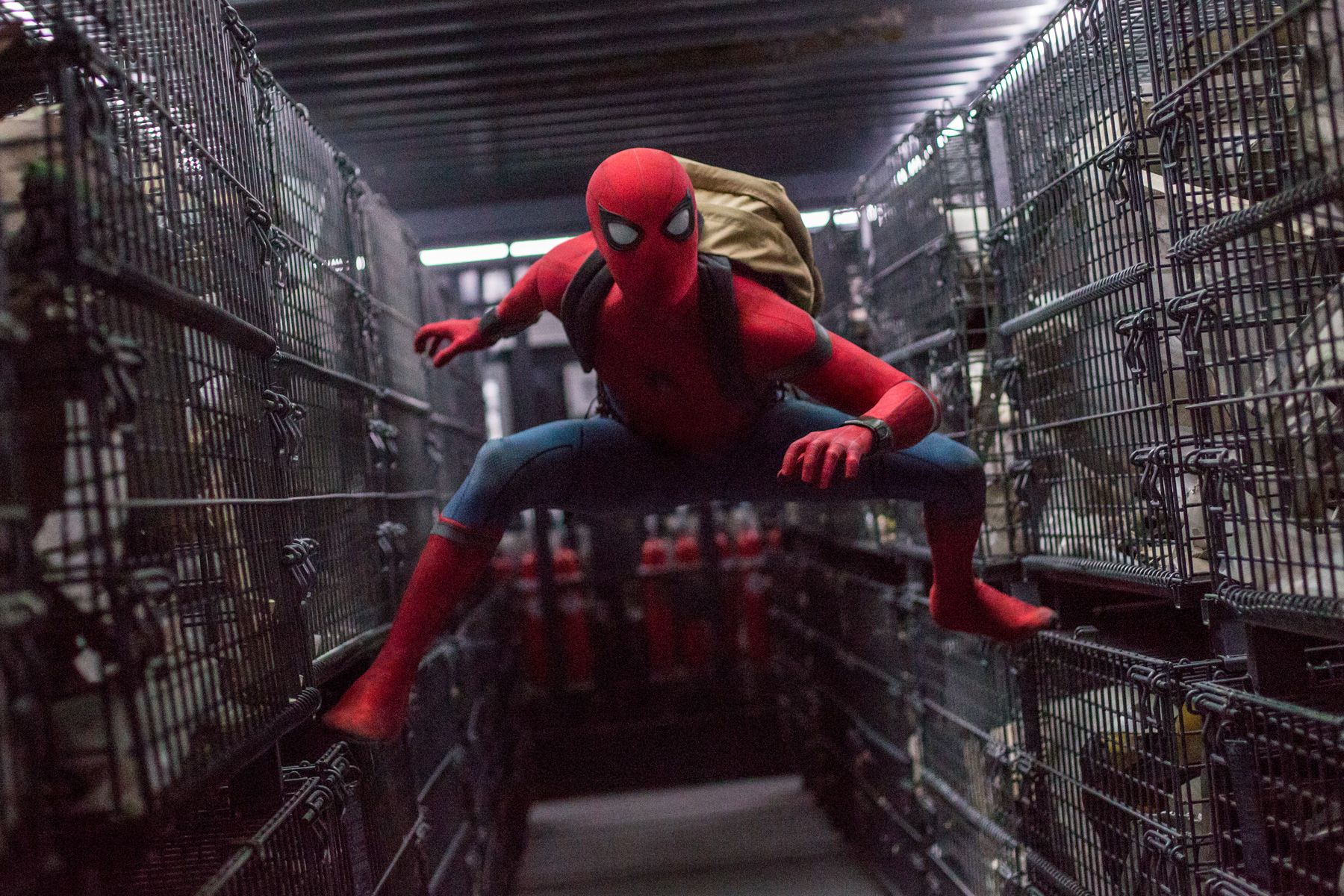SPOILER WARNING: This article contains major spoilers for Spider-Man: Homecoming, in theaters now.
There are some things that a Spider-Man story needs to have, especially one set in Peter Parker's high school days:
- Peter being bit by a radioactive spider
- Peter's inaction causing his Uncle Ben's murder
- Flash Thompson being a dimwitted bully/jock
- Gwen Stacy or Mary Jane as a love interest (neither were around in Spidey's high school days in Stan Lee and Steve Ditko's original comic book stories, but one or both have been in pretty much every subsequent retelling of the era)
- Peter working for The Daily Bugle, selling photos to gruff boss J. Jonah Jameson
- Peter's best friend Harry Osborn, son of his archenemy Norman Osborn/the Green Goblin
Guess what? Director Jon Watts' Spider-Man: Homecoming has none of the above, despite being the first solo film starring Tom Holland's Marvel Cinematic Universe-residing Peter Parker. Yet it still feels like the most authentically "Spider-Man" movie in six attempts over 15 years.
RELATED: How Spider-Man: Homecoming Pays Tribute to A Classic Marvel Comic
While all five of the previous Spider-Man films got plenty of the mythos right to varying degrees -- Alfred Molina's Doctor Octopus and Emma Stone's Gwen Stacy remain standout performances, for example -- this one really nails it where it counts: Spider-Man himself.
Holland's likeable and vulnerable Peter Parker feels like he was lifted directly out of the source material, most specifically Brian Michael Bendis and Mark Bagley's lengthy and excellent run on Ultimate Spider-Man. He's extraordinary good-hearted -- beyond the obvious superheroics like the Washington Monument scene, he makes sure to save the cat after the attack on the bodega. He's funny -- but it's driven out of covering up his insecurities, not sarcastic bluster. And, as seen at Liz's party and plenty of other scenes, he's awkward -- in a way that's much more believable than say, Andrew Garfield's Peter Parker (who was just a little too much of a cool skateboarding rebel to come across as a true high school nerd).
These are the things that have made fans love Spider-Man for more than 50 years. While both Garfield and Tobey Maguire had some parts of the role down, they never mastered the full range of Spidey-esque characteristics the way Holland does. All five of the previous Spider-Man movies were overly concerned with the trauma and drama of the character's life -- making Spidey a lot more brooding and a lot less fun-loving. That's a part of Spider-Man, sure, but Homecoming confronts the reality of what would happen if a teenager suddenly developed superpowers: It'd probably be pretty cool! (And it helps that Holland isn't nearly 30, like Maguire and Garfield were in the high school scenes of their films.)
Beyond just the portrayal of the main character, Spider-Man: Homecoming honors the comic books with exactly what keeps them vital after all these decades (at least theoretically): Doing different things with the character. Even though it's a Spider-Man that's still very early in his career, much like Holland's initial appearance in the role in last year's Captain America: Civil War, he's been at this for at least a little bit. Thus, when the origin isn't necessary -- Marvel Studios President Kevin Feige said multiple times in the past two years that it'd be skipped -- the character can start to move forward.
Rather than again seeing Peter Parker as a student at Midtown High, he attends the Midtown School of Science and Technology, where he's one of many science whiz kids. So, yes, Flash Thompson is here, and still a bully -- but this time, a smart bully. (Twist!) This automatically puts Peter Parker in a different light -- he's still a nerd and a bit of an outcast, but this time, he's among likeminded individuals. That makes the dynamic between say, Peter and Flash, considerably more interesting than "Flash bullies Peter because Flash is dumb and Peter is smart." As seen in Homecoming given Peter's general flakiness -- for good reasons, of course, but the other characters don't know that -- Flash may have some legitimate cause to not be fond of Peter.
Other supporting characters taken from the comic books also appear in new contexts. Betty Brant does the school's video announcements, in what's surely a nod to her journalism career. Rather than being anything resembling one-time Hobgoblin Ned Leeds, Ned is, as has been heavily noted, closer to Ganke, the best friend of the Ultimate Spider-Man, Miles Morales. Liz, well -- her parentage is different, and if you've somehow avoided spoilers up to this point let's leave it at that.
RELATED: Spider-Man: Homecoming: So, Who Is Zendaya’s Michelle?
While the Andrew Garfield Spidey films also didn't use The Daily Bugle or J. Jonah Jameson, this one goes even further by skipping other "must haves" like the Osborn family, Gwen Stacy and Mary Jane. (Zendaya's Michelle is teased to step into a Mary Jane-esque role, but the character is so different than any prior Mary Jane, that whatever happens with the character should remain fresh.) While it's entirely possible all of those elements will be seen in future movies -- and let's hope at least some of them do, because those things are all awesome when done well -- Watts and company know that viewers have seen them before in the not-so distant past, even if they were in prior continuities. Avoiding them here forces the film to do things that audiences haven't seen before, from villains like the Vulture (how awesome was Michael Keaton?) to seeing Spider-Man drive a car, a novel sequence that was surprisingly compelling to watch.
Even Spider-Man's costume is different from what fans are used to, and not just the new visual touches. Early in the film, his friend Ned is able to break through Tony Stark's safeguards so Peter can enjoy all the Iron Man-esque high-tech options the suit has to offer. On one level, that feels anathema to what the character's all about, especially at this stage -- since we're used to him being low-tech and struggling to even afford the chemicals that comprise his web fluid -- but not only does it add an entertaining new dimension, in the tradition of the ol' Parker luck, he mostly fails at operating it, and it gets him to trouble more often than not.
Just on an instinctual level, it's refreshing -- and straight-up necessary -- to see Spider-Man pushed in new directions given the relative deluge of Spider-Man movies released since 2002. This is how Spider-Man: Homecoming pays the greatest tribute to the comic books that have shaped the character for so many years. In the comics, the stories move forward. The characters grow and age. They do different things. Spidey grows four arms or gains cosmic powers, or becomes an anthropomorphic spider-totem or gets his body taken over by Doc Ock. In recent years of the comic books guided by writer Dan Slott, Peter Parker -- classically considered a down-on-his-luck everyman struggling to make ends meet -- has become a rich, globetrotting industrialist running his own company, in the fashion of his Homecoming co-star Tony Stark. Yet these moves, bold as they may be, don't betray the character (though some fans might argue differently) -- they add to the legacy and keep Spider-Man interesting, with the knowledge that at the core is still good-hearted, funny and awkward Peter Parker.
It's hard for any adaptation to make similarly bold moves, because of limited space and the mass audience it has to please. (At least one went too far -- the Spider-Man: Unlimited cartoon which saw Spidey on an alternate Earth fighting human/animal hybrids.) Homecoming is relatively mild in its pushes away from the expected, but the result is still thrilling. In the film, Marvel Studios and Sony Pictures were able to both add and subtract from the familiar trappings to do something a little different with character, and end up with the most satisfying film for Spidey fans yet.
(Though let's get J. Jonah Jameson in the sequel. And it should still be J.K. Simmons, Commissioner Gordon or not.)



